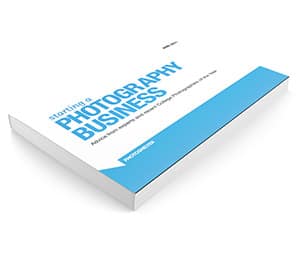Travel has always been my first love. In 1994 I bought my first camera – a Pentax Zoom 90 WR point and shoot – because I was going to Europe for a two-year working holiday. The only way to share photos with family back then was to have the film developed and post the prints home!
While photography (and technology) has changed remarkably in the last 25 years, what you should look for in a camera for
travel photography is much the same: small, light, capable of great results and preferably weather resistant.
I’ve used all sorts of camera brands over the years. However, for me, Fujifilm X-Series cameras and lenses are the perfect travel companions. Whether it’s a trip to the Australian outback, visiting remote Buddhist temples in the Javanese jungle, photographing puffins in the Faroe Islands or capturing
traffic trails in Taiwan, my X-Series cameras have always produced stunning results. Here are my recommended Fujifilm X-Series kits for your next big adventure.
Best minimalist kit
Camera: Fujifilm X100F
Lens: Fixed F2 Fujinon lens
Weight: 469 grams
The best minimalist kit choice was easily the stunning
Fujifilm X100F. This is the best compact digital camera ever made. Yes, it really is that good!
Many photographers – including diehard users of other brands – use this as their “take everywhere” shooter. The X100F is small and quiet, and the fast f/2 Fujinon lens creates beautiful images. It may be small, but it boasts an impressive array of features including a leaf shutter and built-in neutral density filter.
Like all the cameras I feature in this article, the
X100F can shoot RAW alongside Fujifilm’s array of stunning JPG film simulations, that replicate the look of classic films such as Provia and Velvia. Fujifilm cameras produce the best JPGs I’ve seen straight out of the camera.
This choice is a little unusual as it has a fixed lens. That’s right. You can’t take it off and swap it for another lens. If the 23mm focal length (35mm in full-frame terms) isn’t your preferred choice, the system also has wide-angle conversion and telephoto converter lenses. However, these do add extra weight to your kit. One of the few downsides to the X100F is that it’s not weather resistant. But, at least it’s small enough to fit in your pocket during a downpour.
One body plus one lens kit
Camera body: X-T30
Lens: XF 18-55mm F2.8-4 R LM OIS lens
Approximate weight: 693 grams
If you only have space to take one body and one lens on a trip, I would recommend the brand new
Fujifilm X-T30 with the
XF 18-55mm F/2.8-4 R LM OIS lens. I’ve been using this line of cameras since buying the X-T10 as a second body back up to my X-T1, and I’ve also used the X-T20. The X-T cameras with a “0” after them are lighter, cheaper, non-weather resistant versions of the flagship models, but usually feature much of the same technology. For example, the X-T30 has the same 26.1MP X-Trans 4 CMOS sensor as the X-T3.
Alternatives for the camera body would be the
X-T20 and the
X-E3. The X-T20 gives you a screen that tilts up and down for overhead and low to the ground shots. Whereas, the X-E3 is the more minimalist choice, and features a joystick that controls where the focus point is in the frame. The X-T30 and the X-T3 have both of these features.
My choice of lens for this kit is the XF 18-55mm F/2.8-4 R LM OIS. Not only is it one of my favorite Fujifilm lenses, but it’s also the lens that I’ve used the most over the last three years.
Often sold with camera bodies, many newcomers to the X-Series remark that the XF 18-55mm F2.8-4 R LM OIS lens is
“surprisingly good for a kit lens.” In no way is this lens like the subpar beginner kit lenses produced by other manufacturers. The XF 18-55mm F/2.8-4 R LM OIS is a stunningly sharp lens in its own right and has produced some of my favorite images ever.
It may not be weather resistant, but it does feature OIS (optical image stabilization) to ensure your shots are as sharp as possible at lower shutter speeds. It’s a variable aperture zoom lens, meaning that the maximum aperture changes as you zoom through the range. However, you can still shoot at f/2.8 at the 18mm focal length, and f/4 at the 55mm end. It’s a top lens for landscape, cityscape, and portraits.
Best kit under 1kg
Camera body: X-T30
Lenses: XF 18-55mm F/2.8-4 R LM OIS + XF 35mm f/1.4 R
Approximate weight: 880 grams
My picks for the best kit weighing under 1kg include the same choices as the ‘One body plus one lens’ kit above, with the addition of the
XF 35mm f/1.4 R. The first time I used this lens, I was blown away by its sharpness and stunning bokeh. It’s a top lens for portraits, still life subjects and even street shooting.
It did have a reputation of being slow to focus, but with Fujifilm’s ongoing firmware updates to both lenses and camera bodies, this has greatly improved. I wouldn’t hesitate to use it in any situation. This lens has a fast maximum aperture of f/1.4 that enables you to shoot images handheld at night without raising the
ISO too high or lowering the
shutter speed too low.
One zoom, two fast primes kit
Camera bodies: X-T30
Lenses: XF 18-55mm F2.8-4 R LM OIS + XF 35 1.4 R + XF 60mm f2.4 R Macro
Approximate weight: 1.095kg
For a lightweight travel kit weighing just over 1kg and featuring two fast prime lenses, add the
XF 60mm f/2.4 R Macro to the kit above. This is another option often overlooked by newer lenses on the block, but it offers superb image quality for portraits and macro shots.
Although it’s not a true macro lens (it offers 1:2 magnification rather than the standard 1:1 magnification for a true macro lens), it is an incredibly light option for close up shots. It weighs less than a third of the weight of Fujifilm’s
XF 80mm F/2.8 R LM OIS WR Macro lens.
Best weather resistant kit
Camera bodies: X-T3
Lenses: XF 16mm F1.4 R WR, 23f2, XF 50-140mmF2.8 R LM OIS WR.
Approximate weight: 2.6 kg check
The best weather resistant kit features Fujifilm’s newest X-Series flagship camera. The
X-T3 has won high praise from users and critics alike since its release in mid-2018. It is an impressive performer, having the fastest autofocus in the X-Series lineup and a continuous shooting rate of up to 20 frames per second. I’ve really enjoyed using this camera alongside my X-T2, which is still an excellent camera.
The newcomer to this kit is the
XF 16 f/1.4 WR lens – often praised as the best lens in the X-Series lineup. Weather resistant, the lens is optically stunning, and a solid performer for landscape, cityscape, and low light shots. With a close focusing distance of 15cm, the XF 16 f1.4 WR lens is highly versatile. I’ve loved using it for food photography.
Best travel kit with zoom lenses
Camera bodies: X-T3 and X-T30
Lenses: XF 18-55mm F/2.8-4 R LM OIS and XF 50-140mm F/2.8 R LM OIS WR.
Weight: 1.8kg
Weighing in at 995 grams, you might actually question why I would choose this lens as part of a travel kit? I’ve even been laughed at when I’ve suggested this lens for travel. Although it’s heavy, this lens is a must-have in my travel photography kit.
Like an equivalent focal range 70-200mm, the lens has a constant maximum aperture of f/2.8, meaning that you can shoot with a shallow depth of field throughout the zoom range. This is particularly helpful during low light situations, or to achieve shallow depth of field at any time.
This XF 50-140mm F/2.8 R LM OIS WR lens also features OIS (optical image stabilization) and has a pleasing bokeh. I’ve used this lens for landscape, cityscape, and portraits. If I could only pick one lens for travel, I’d have to flip a coin to choose between the two amazing zooms in this kit.
If you have different weight or budget considerations, you could substitute the excellent
XF 55-200mm F/3.5-4.8 R LM OIS lens in this kit. I’ve never regretted taking this lens along with me on trips, but if you plan on shooting in low light at the far range of the zoom, you will be shooting at a maximum aperture of f/4.8, which may slow down shutter speeds. Thankfully, this is another lens with OIS (optical image stabilization).
My favorite kit
Camera bodies: X-T3 and X-T2
Lenses: XF 16mm F/1.4 R WR + XF 18-55mm F/2.8-4 R LM OIS + XF 35mm f/1.4 R + XF 50-140mm F/2.8 R LM OIS WR
Approximate weight: 2.9 kg
This is my favorite kit. It may be the heaviest listed in this list, but this is what I would typically take on my travel adventures. It pairs two weather resistant camera bodies with my two favorite zooms and two favorite primes. This kit has a reach from 16-140mm (24-210 in full-frame terms) and covers many shooting situations. The XF 50-140mm F/2.8 R LM OIS WR lens may not be the longest in the X-Series lineup, but it’s still capable of capturing stunning wildlife images.
X-Series options I don’t recommend for travel kits
X-T100
In 2018, Fujifilm released the entry-level
X-T100. Although this attractive looking camera looks very much like the rest of the X-Series line-up, its autofocus can’t match the cameras I’ve featured above.
18-135mm lens
The
XF18-135mm lens is often on the
list of recommended lenses for Fujifilm travel photography. Having owned and used one, it doesn’t make my list. For a slower, all-in-one travel zoom, I don’t think it has enough reach.
27mm lens
The
27mm F/2.8 pancake lens is sharp, and you can often buy them at a bargain price. It’s a firm favorite amongst many Fujifilm photographers, but it doesn’t make my list as it’s the only lens in the lineup not to have a ring on the lens to change aperture.
Conclusion
The Fujifilm X-Series range is perfect for travel photographers for so many reasons.
With an impressive lineup of prime and zoom lenses for all budgets, the X-Series has you covered for a wide range of situations including low light photography and adverse weather conditions. The camera bodies feature retro charm and excellent ergonomics, and no other system can match the beauty of Fujifilm’s straight out of camera JPGs.
Share this article.



















 The following tip has been submitted by Phillip Kirkham, a reader of DPS and avid wildlife photographer – see
The following tip has been submitted by Phillip Kirkham, a reader of DPS and avid wildlife photographer – see 



